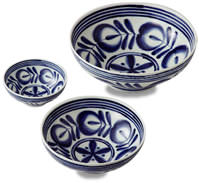Culture
Ceramic and Lacquerware

Are Japanese ceramic famous?
In the Nara period- 710-794 -, The Chinese technique of glazing and firing was introduced to Japan, but only earthenware goods for daily use were made during this period. The Heian period- 794-1185 -gave birth to two types of kilns, one appropriate for ceramic for daily use, and the other designate for various high-grade applications. In the Muromachi period- 1333-1568 -, the popularity of the tea ceremony gave rise to the production of high-grade ceramic rich with regional variation. The use of overglaze enamels began in the Edo period- 1600-1868 -, and they became standard for ceramics of the period, as with the Arita and Kutani porcelains that were being produced at the time. In particular, a grate number of orders were received by the Dutch East India Company for Arita ware, and thus Arita ware came to exert influence on ceramic artists around the world.
What is so prized Japanese Lacquerware?
Ceramics are known as- China -abroad, but- Japan -is the term signifying Japanese Lacquerware. In Japan, lacquered combs and trays were found among unearthed goods from the early Jomon period. According to the - Nihon Shoki - there were artisans specializing in Lacquerware at the end of the 6th century. The lacquer used for Lacquerware differs around the world according to the quality of tree sap, and Japanese lacquer is considered to be the highest in quality.
- : Back to Japanese Culture
Culture
- Travel tips
- History
- Culture
Food
Japanese Culture
- Tea Ceremony
- Flower arrangement
-Ikebana- - Hinomaru
(National flag of Japan) - National flower of Japan
- National bird of japan
- Kabuki
- No & Kyogen
- Japanese Tanka
- Ukiyoe
Wood Block Prints - Origine of
Japanese People - Japanese language
- Ceramic & Lacquerware
- Onsen
- Hanami (Flower viewing)
- Japanese festival
- Housing in Japan
- Manga
- Kodomonohi
(Children's Day)
